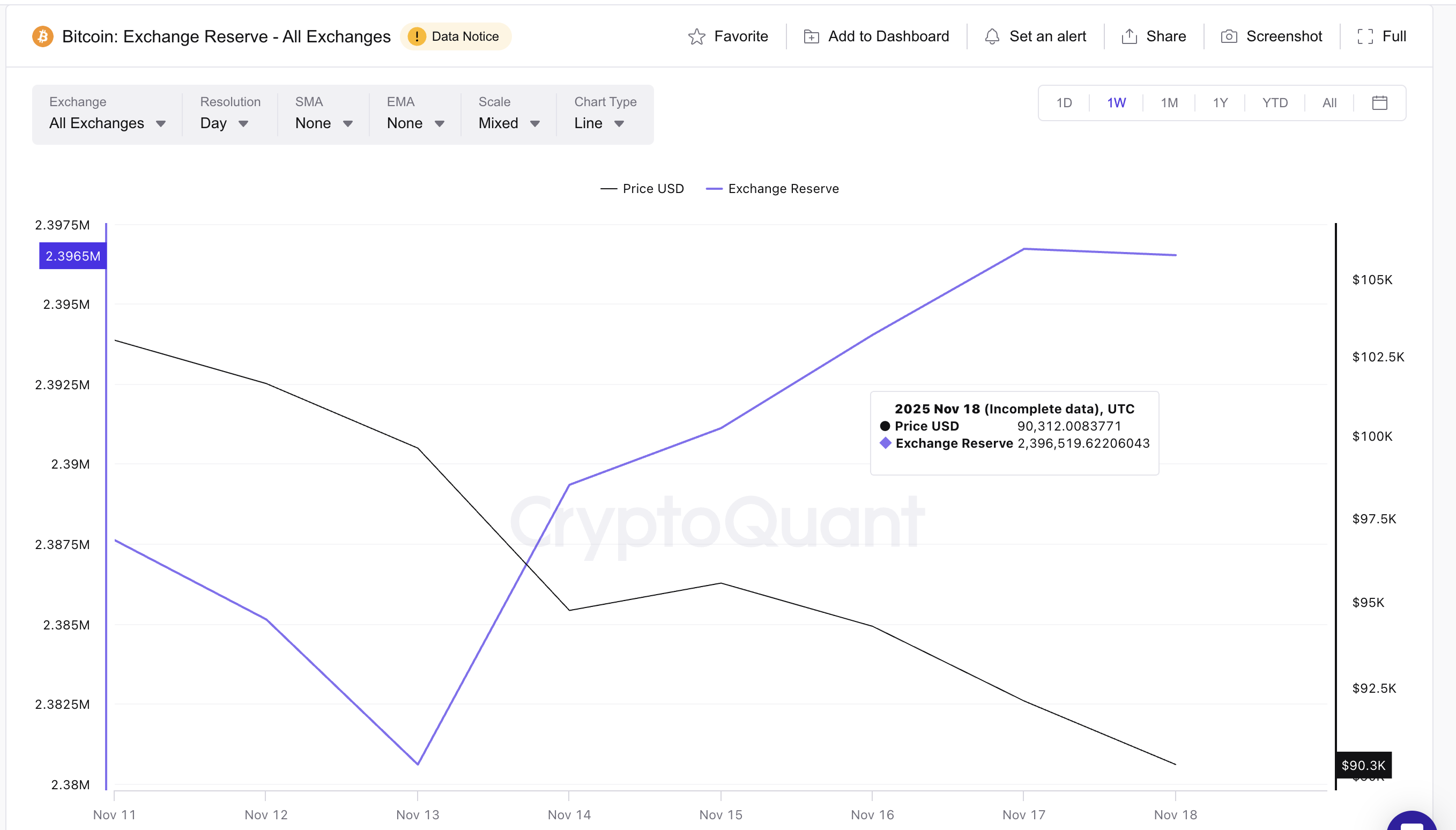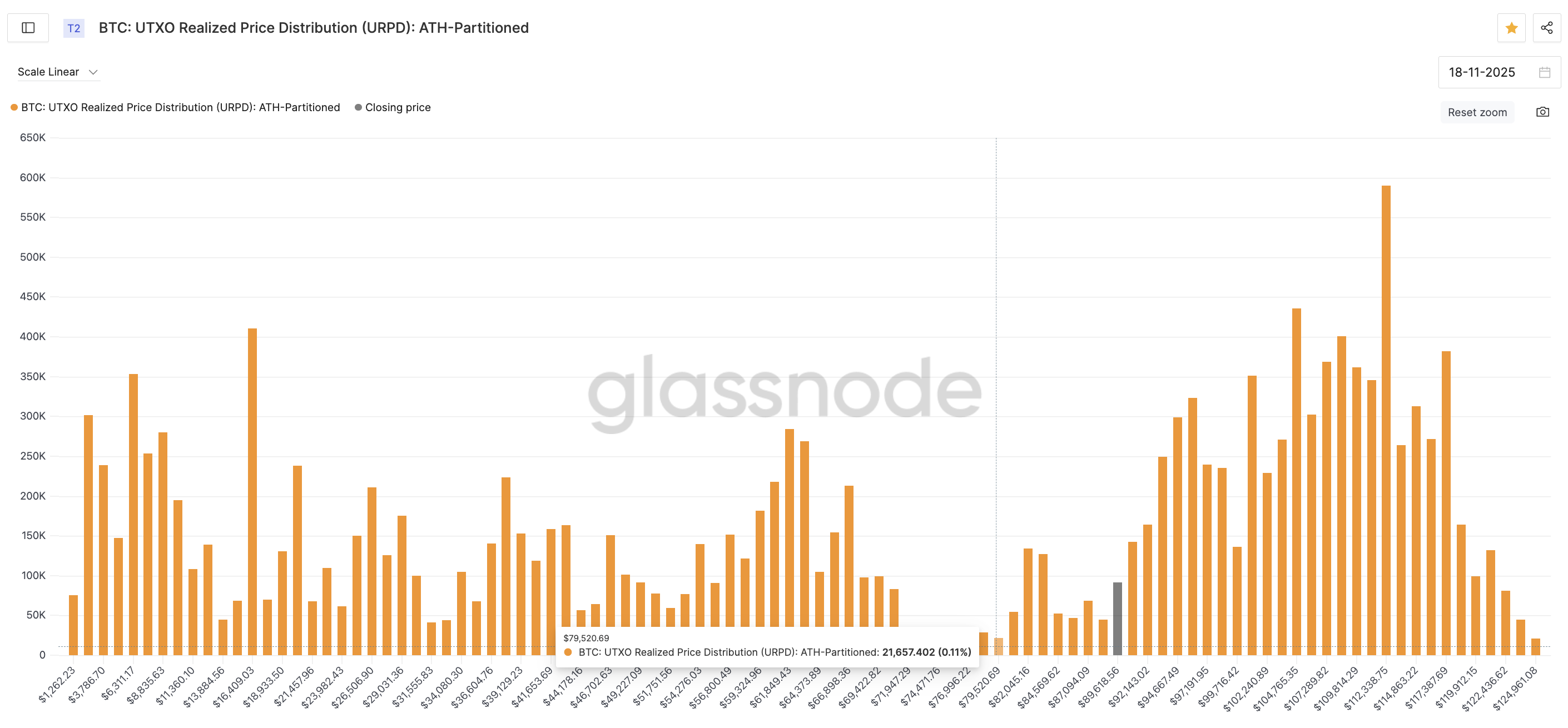Bitcoin price fell below $90,300 and is currently trading near $89,900 after plummeting to a 16% 30-day loss. Traders are split between hoping for another bounce or bracing for bigger losses.
However, the charts and on-chain data represent one simple idea. If the Bitcoin price does not recover key levels soon, the next bottom could be below $80,000.
boost
boost
Spot sales occur due to a surge in exchange reserves.
The nature of sales pressure has changed. The initial BTC decline was primarily driven by long-term liquidations, but that momentum has dissipated. On Binance alone, BTC/USDT long liquidation amounts to approximately $558 million, while short selling liquidation amounts to approximately $3.56 billion. This figure is more than six times higher, showing that buy-side leverage has already disappeared. As the liquidation disappears, the price decline starts to show actual selling instead of forced selling.
Want more token insights like this? Sign up for editor Harsh Notariya’s daily cryptocurrency newsletter here.
This is exactly what exchange reserves are confirming.
From November 13th to November 18th, Bitcoin holdings on all exchanges increased from 2,380,595 BTC to 2,396,519 BTC. This means that 15,924 BTC moved to exchanges in 5 days. At the current BTC price, it’s worth about $1.43 billion.
This is the highest inflow in weeks and a sign of deliberate spot selling and a possible panic exit. Holders are moving their coins to exchanges for sale or preparing to sell them.

boost
boost
The transition from liquidation-based declines to spot-based declines is important because it generally makes declines more controlled and more persistent. It also explains why Bitcoin price remains under pressure even after leverage cools.
Bitcoin Price Exposure Due to Weak Support Pockets
To understand where the Bitcoin price may stabilize, we look at the UTXO Realized Price Distribution (URPD). URPD shows where the holder last purchased the coin. These regions act like support clusters because people tend to defend the prices they enter.
However, the area between $89,600 and $79,500 has very low support. Few coins were last moved in this band. This means there are fewer holders motivated to defend them.

This explains why losing $90,300 is risky. If Bitcoin is unable to recover this level, the chart and URPD map expose the price to a wide, weak zone extending to highs below $80,000.
The trend-based Fibonacci structure also supports the same idea. Bitcoin has been falling inside the wedge since October 6th. The lower trend line is weak because there are only two clean touches. The price is moving towards that line again, and a breakout would break the trend line, leaving the Fibonacci extension at $79,600, the next real target. This level is almost perfectly consistent with the URPD gap.
Short-term support near $82,000 to $84,500 is the last buffer before the zone, according to the URPD cluster. If Bitcoin continues to close below $90,300, this support becomes the next logical test.

A reversal is still possible, but would require Bitcoin price to recover several levels in order. First we come to $90,300, which is a sign that the market is refusing to collapse. After that, $96,800 becomes the next hurdle. And finally, a rise above $100,900 would change the near-term sentiment to bullish.

